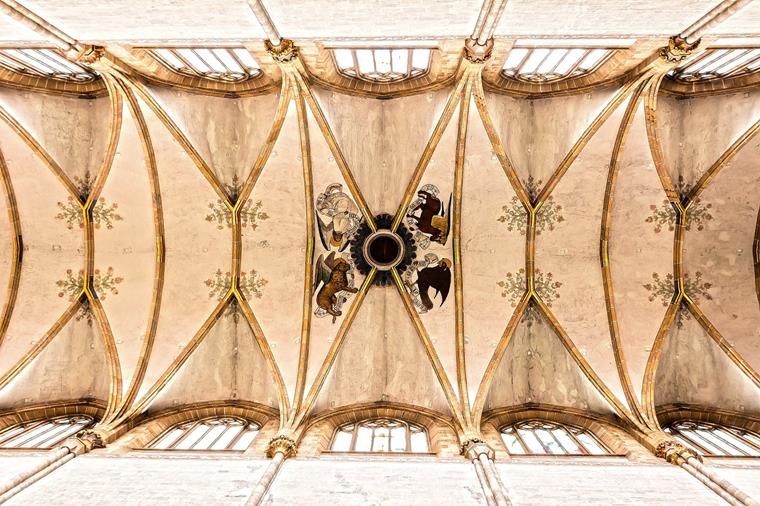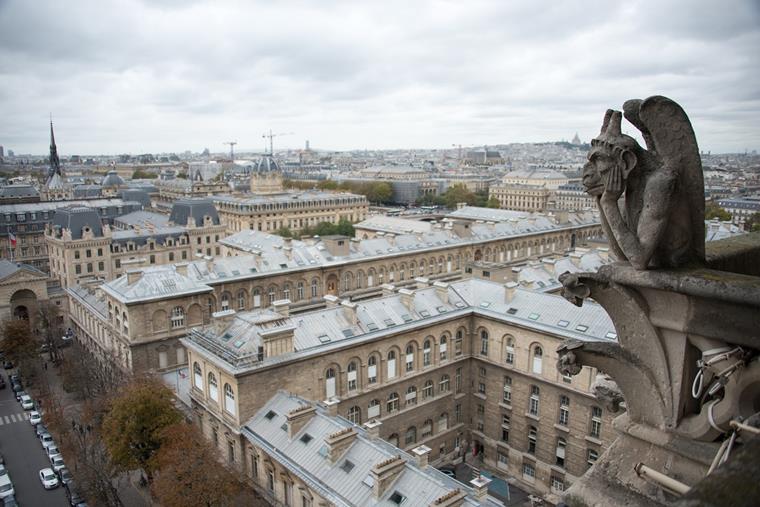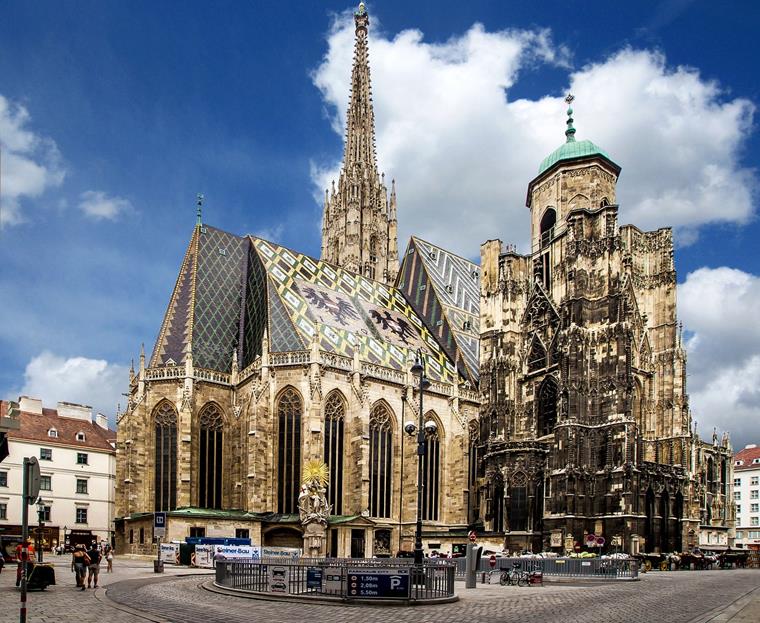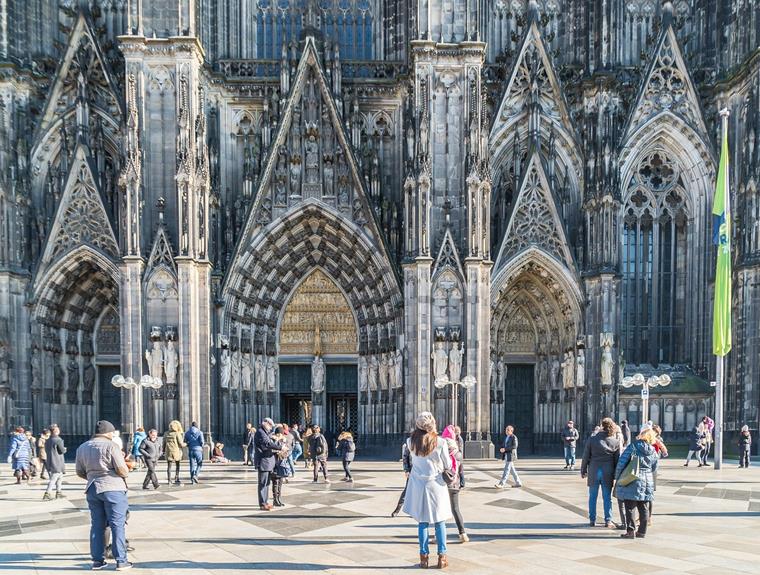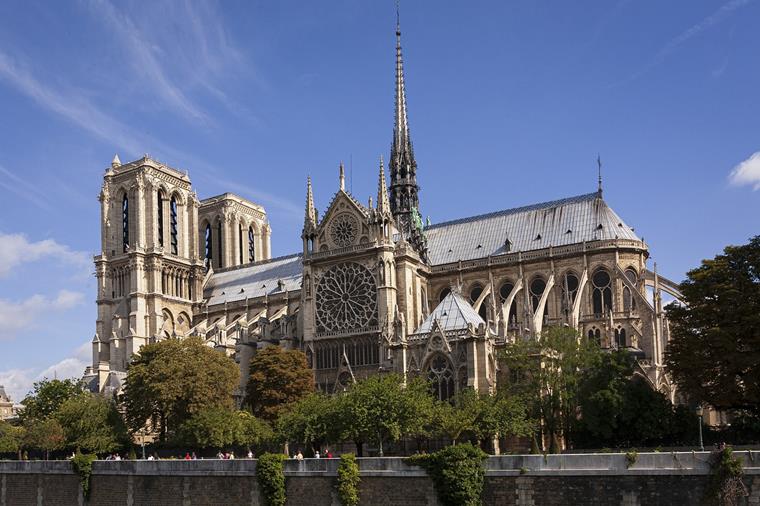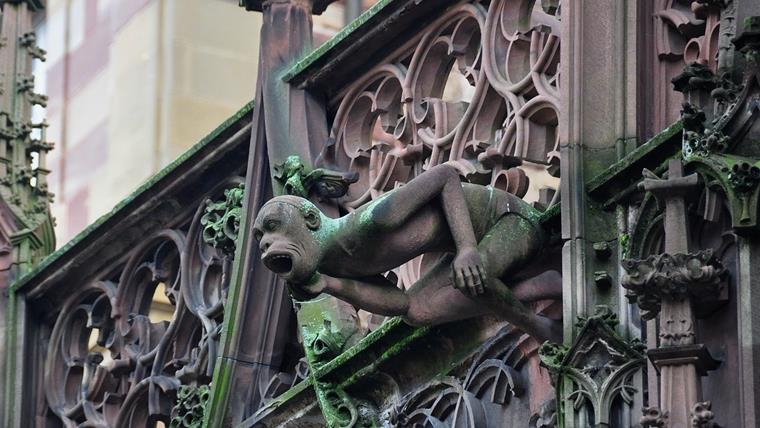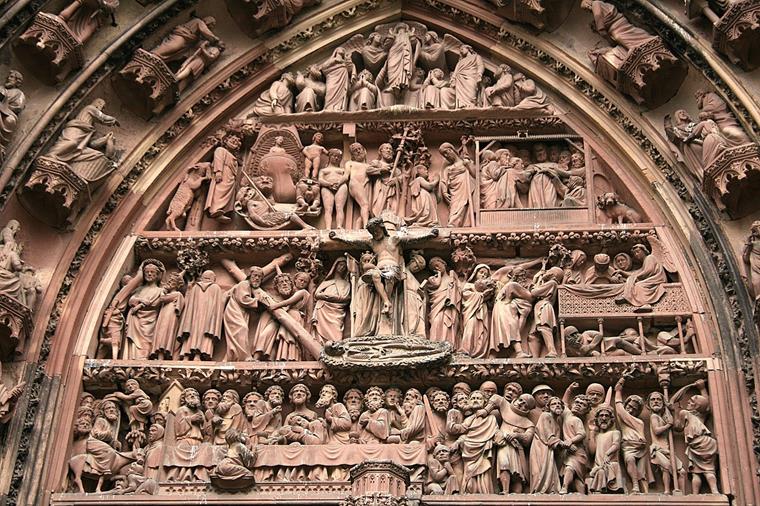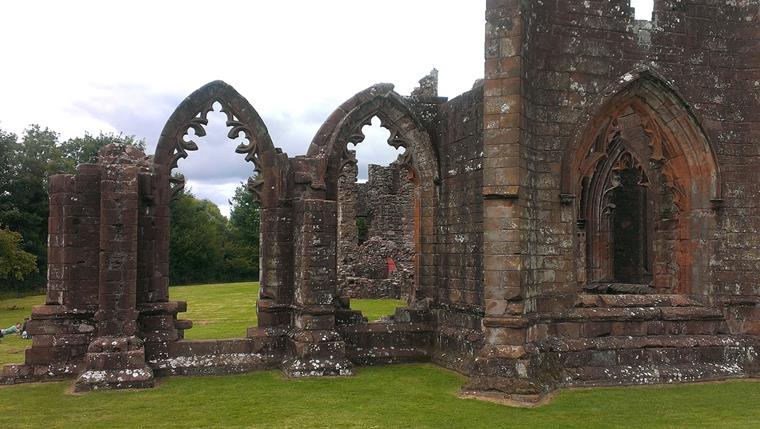At the beginning of the Middle Ages in Europe, numerous castles, palaces, and monasteries were built, many of which still exist today. The colossal Romanesque buildings with their narrow windows taught people reverence and humility, both inside and outside their rather simple walls.
Built as a mark of power and influence, many of these impressive structures have endured for hundreds of years. In a previous post, we showed you the most interesting Romanesque buildings and information about the early medieval Romanesque period.
However, the architectural style changed over time and went in a new direction. The somber interiors and thick, impenetrable walls gave way to wide glass facades and newly developed gargoyles adorned the lines of magnificently decorated windows with their characteristic pointed arches: The Gothic period had begun and lasted, with regional differences, from about the 12th/13th century to the 16th century.
In this article, we would like to introduce you to the most interesting buildings of Gothic architecture in more detail. In the following text, we will summarize what we can learn from the old master builders of the Gothic period in the construction industry today. Are you excited? Then read on!
How Can Gothic Buildings Be Recognized?
The features of the Gothic style are very different from the previous Romanesque style. In contrast to the massive Romanesque structures, Gothic structures seem to be almost filigree. The most famous feature is probably the pointed arches used everywhere: on the facade, the windows, or in the interior using an artistic vault.
The stability of the structures is not ensured by a surrounding skeleton, but by external buttresses. Exterior walls are typically punctuated by finely structured windows, while ornamental gables, also known as wimpergs, extend artfully over the glazed areas. The stained-glass windows and rose windows, in particular, still attract admiring glances today.
You can also often recognize a Gothic building from a distance thanks to what are known as pinnacles, especially if it has a religious purpose. These are slender, high-rise towers, mostly located on the sides of the building. Elements in the shape of folded leaves, known as crockets, adorn the facade along the pinnacles.
The gargoyles, which often appear rather creepy, are particularly noticeable. They drain rainwater and are still the subject of many, often grim, legends today. So, let’s take a closer look at some of the most interesting Gothic buildings and their history.
St. Stephen's Cathedral
Vienna, Austria
Anyone who visits the capital of Austria not only has to eat an original piece of Sachertorte, but also has to visit St. Stephen’s Cathedral. As it is Vienna's landmark in the heart of the city. With a height of 136 m (449 ft), it is still the tallest church in Austria. Like most buildings from the Middle Ages, it has an eventful history.
In the 12th century, there was a Romanesque church on today's Stephansplatz. According to local documents, it was built in 1147. Like many buildings at that time, however, it fell victim to a fire and was destroyed in 1258.
The church was then rebuilt in the Gothic style. The construction work dragged on for several centuries, with the famous stone south tower, affectionately called Steffl, being completed in the 14th century. The north tower, known as Hero's Tower, has remained incomplete to this day.
As of 1365, the Cathedral as a metropolitan church had the highest ecclesiastical authority in the country. However, its importance for worshippers in Austria made it a popular target of destruction.
After the first Turkish siege of the city in 1529, St. Stephen's Cathedral had to be extensively restored and renovated. Moreover, in the 17th and 18th centuries, you can also see the Baroque influences on altars and decorations. In the 19th century, during the heyday of the New Gothic, the original Gothic style of the dome was restored.
Following the destruction of St. Stephen's Cathedral during World War II, it was once more restored to the state that we can marvel at today. With its typical Gothic architecture, the Pummerin, one of the largest church bells in Europe, and the breathtaking stained-glass windows, the cathedral is an excellent example of Gothic architectural art.
Cologne Cathedral
Cologne, Germany
When you think of Gothic buildings in Germany, you might think of Cologne Cathedral first. Its official name, High Cathedral of Cologne, already suggests its structural and symbolic sublimity. With a total height of 157 m (515 ft), this imposing structure is one of the largest Gothic church buildings in Europe and the second-tallest church tower in the world.
The foundation stone of the building was laid in 1248, while the official completion dates back to the 19th century. The filigree pointed arches, elaborate rose windows, and sumptuously ornamented portals are symbols of Gothic architecture in its purest form.
The stained-glass windows on the south aisles, in particular, are real eye-catchers. Entire stories from the Bible are immortalized here and impressively show how sophisticated glass art in the Middle Ages was.
Like most famous buildings, Cologne Cathedral was damaged during World War II. The dome was heavily damaged by a fire in a neighboring building, and it took decades to restore this masterpiece of architectural art. As a symbol of the region's history, culture, and resilience, Cologne Cathedral was listed as a UNESCO World Heritage Site in 1996, and remains the city's landmark to this day.
Notre-Dame de Paris
Paris, France
The famous Notre-Dame Cathedral in Paris also has a long and checkered history to tell. Construction began in 1163 and it was finally consecrated in 1345. The construction took more than 180 years: Not only that, but work on the cathedral was only really completed in the 15th century.
Like many churches, Notre-Dame Cathedral fell victim to the French Revolution at the end of the 18th century. Looting and the destruction of religious symbols led to this impressive building only living a shadowy existence for a long time.
It was not until Victor Hugo's novel "The Hunchback of Notre-Dame" (1831) was published that the cathedral was once again shown in a different light and interest in it was revived. During the 19th century, a comprehensive renovation added many of the building's now-familiar features or restored them to their former splendor.
It remained peaceful and quiet around Notre-Dame for a long time, until a fire broke out in the cathedral on April 15, 2019, causing devastating damage. The roof structure and the spire collapsed. Although it was decided to rebuild the cathedral in its original form, this work is likely to continue for some time.
Let's hope that this Gothic masterpiece will soon shine again in its typical Gothic splendor. The west facade, with its ornate windows and numerous sculptures, is truly impressive, and the twin spires of the cathedral, which reach more than 69 m (221.5 ft), are a distinctive landmark of Paris.
The roof of the cathedral, which unfortunately collapsed, is a great structural feature that will hopefully be restored soon. An intricate network of buttresses and arches transfers the weight of the roof to the pillars, creating an enormous stained-glass window structure.
Strasbourg Cathedral
Alsace, France
A true masterpiece of Gothic architecture, Strasbourg Cathedral, is a must-see. Construction began in the 12th century and took more than 200 years. The use of pink sandstone for the facade clearly differentiates this church from other Gothic churches.
Another special feature is the north tower, which has a height of almost 142 m (466 ft), and was the tallest church tower in the world for a long time. Inside, too, visitors can expect special historical features. One of the oldest astronomical clocks in the world is located here. Since the 16th century, it has reliably shown information about the position of various heavenly bodies.
As with most well-preserved Gothic buildings, Strasbourg Cathedral has stained-glass windows. The rose window in the west of the cathedral is one of the largest in the world. Although these windows were damaged during World War II, they were successfully restored.
This impressive Gothic building has been a UNESCO World Heritage Site since 1988 and still justifiably attracts many visitors.
Summary: Gothic Architecture
Gothic architecture is easily recognizable for everybody. The tall cathedrals with their pointed arches, filigree vaults, and numerous decorations on every part of the facade clearly stand out from other structures.
You see: In the Gothic era, architecture reinvented itself. Somber, massive Romanesque buildings became filigree, soaring lines interspersed with wide stained-glass windows. Magnitude and splendor were the order of the day in the construction of these striking landmarks.
Let us now come to the final part of this blog post: What should we adopt from Gothic masterpieces when designing modern buildings, and what can we learn from the master builders of old?
What can we learn from the Gothic period?
The Gothic period was an age of architectural innovation. By experimenting with new techniques, the master builders achieved breathtaking constructions which, despite their filigree lines, were highly stable. New developments such as the ribbed vault and pointed arches made it possible to build taller and lighter structures.
We can adopt this courage and passion for innovation in the modern construction industry. Don't be afraid to try something new and develop new techniques!
Sustainability is still an important issue in the construction industry. Our industry often uses building materials that highly criticized as climate killers, such as reinforced concrete. Gothic buildings can serve as inspiration here. Natural materials, such as stone and wood, were used here. Much of it came from the region, which minimized long transport routes. The use of the right building materials and thus a guarantee of durability are particularly characteristic of the Gothic style.
Today, a construction project should be completed as quickly and inexpensively as possible. The longevity just discussed is also often neglected. The construction design and management of Gothic cathedrals could take some time: sometimes decades or centuries. Especially for young engineers, Gothic construction can be an example of planning complex construction projects in order to create a building that infatuates people for a long period of time.
Many buildings look beautiful, but nothing more. Practical buildings, on the other hand, often lack a certain aesthetic. Either one or the other: Is that necessary? In Gothic architecture, beautiful filigree shapes merge with high functionality. A compromise from both directions is certainly also interesting for modern projects.
After all, why build a building that, although useful to society, is far from popular with those who are ultimately expected to use it for decades? Beauty and functionality have to go hand in hand.
In the design and construction of these impressive cathedrals in particular, master builders had to be able to fall back on a great store of knowledge of structural engineering and structural analysis. Of course, this could not be done alone. Teamwork is required! Each of these buildings is a community and usually a generational project that challenged many experts.
From architects to stonemasons to interior design: Different specializations had to work closely together. Our construction industry would also benefit from working a little more collaboratively, and less next to, but separate from, each other. After all, everyone can only benefit from the expertise of other areas, and we can create great projects together!
If you'd like to listen to this blog post, you can find the episode in German on our podcast:
More About Our Podcast